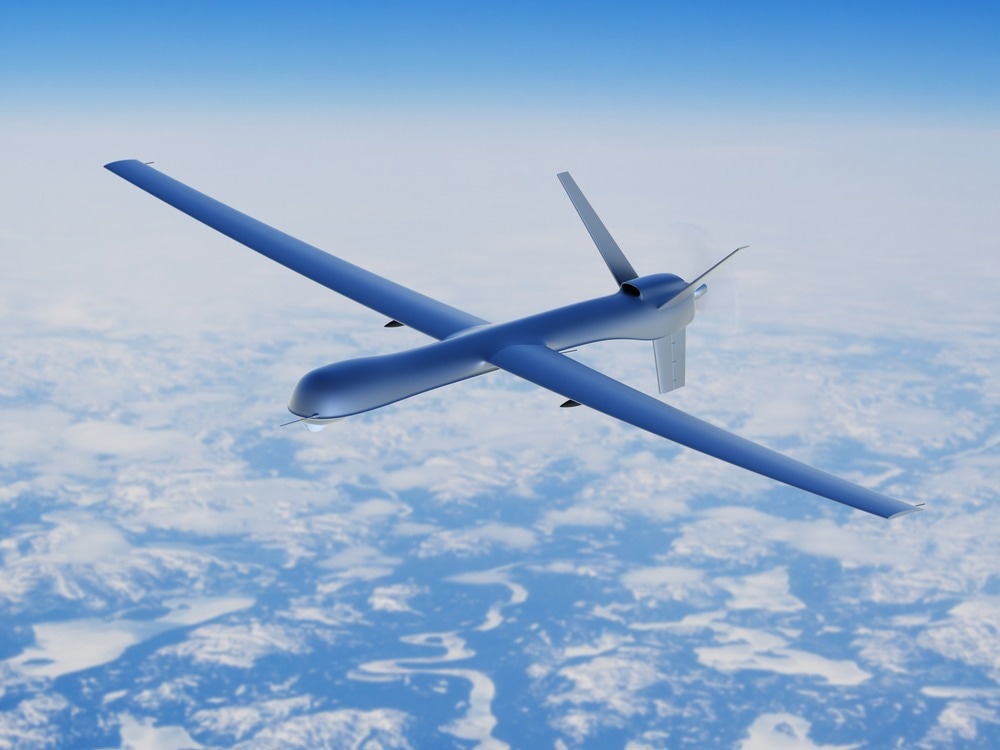According to the Provisional State of the Global Climate report, the world is on track for 2022 to be the eighth consecutive warmest year on record.

Image Credit: Alexander Limbach/Shutterstock.com
Although climate change has been given greater attention in recent years, temperatures continue to soar, with extreme heat waves, drought, and flooding becoming more commonplace.
The world must tackle greenhouse gas emissions to avoid the devastating irreversible impact of global warming; however, fossil fuels are still heavily relied on in many industries, including transportation and energy.
Why is Hydrogen Significant to Fuel Cells?
Hydrogen offers an important alternative to non-renewable energy sources. It can be produced from a diverse range of domestic resources and has the potential to generate clean energy. Hydrogen energy is stored as chemical energy in a fuel cell that generates electrical power, emitting only water vapor and warm air as byproducts.
Hydrogen fuel cells are versatile and have already been leveraged to replace fossil fuels in several applications in a wide range of industries. Hydrogen fuel cells, therefore, present an important opportunity to tackle climate change by replacing fossil fuels in a number of applications.
What Technologies Utilize Hydrogen Fuel Cells?
Hydrogen fuel cells are used as an energy source for a range of products, including buses, cars, trains, planes, boats and submarines, and unmanned aerial vehicles (UAVs). Therefore, hydrogen fuel cells have great potential to revolutionize the greenhouse gas emissions of the transportation sector, which is currently one of the world’s greatest polluters.
Currently, the market is very segmented, and companies across the globe are investigating how hydrogen fuel cells can be implemented into a range of vehicles. While Tesla CEO Elon Musk has previously downplayed the potential of hydrogen fuel cells in automobiles, others disagree and as of 2022, there are two hydrogen-powered cars available publicly: the Toyota Mirai and the Hyundai Nexo.
One sector, in particular, is emerging in the hydrogen fuel cell market: UAVs.

Image Credit: maxuser/Shutterstock.com
Why Should UAVs Consider Using Hydrogen Fuel Cells?
UAV use is quickly expanding in the logistics sector and as the world moves towards global goals of carbon neutrality, all sectors are facing increasing pressure to decarbonize their activities. While there are numerous advantages to considering the use of hydrogen fuel cells to power UAVs, the most obvious is the chance to reduce carbon emissions. While increasing flight time by one-third and improving performance, hydrogen fuel cells can also cut emissions and reduce noise pollution.
Recently, there have been moves by notable drone companies to adopt hydrogen fuel cell technology. Shell Pipeline Company, for example, recently announced that it would be using Intelligent Energy’s IE-SOAR™ 2.4kW hydrogen fuel cell technology in its pipeline inspection operations in the US. The company expects to enjoy the benefits of increased operational efficiency due to reduced downtime, as well as reduced maintenance and zero emissions.
Dronamics, the world’s first cargo drone airline, has planned to collaborate with Cranfield Aerospace Solutions (CAeS), a leading aerospace technology developer, to develop clean hydrogen fuel cells to power its Black Swan cargo UAVs. If successful, the collaboration will be an important step toward establishing emissions-free logistics systems.
What Challenges Could Hydrogen Fuel Cells Face?
While hydrogen fuel cells continue to be adopted in UAVs, there are still some significant challenges to overcome before they can reach their full potential in this sector. For example, the biggest challenge is that the overall cost of hydrogen fuel cell systems is still relatively expensive because they are complex to build and require using costly materials such as platinum.
Additionally, a major drawback of hydrogen fuel cells undermines its biggest advantage. Currently, most of the world’s hydrogen production uses fossil fuels to power the necessary reaction. Experts predict that this will remain the case for many years to come. This will limit how widely the technology is adopted; if fossil fuels are used in the production process, then it is not truly green.
Future Outlook
Continued research and development are needed to enable hydrogen fuel cells to meet their full potential, not only in UAVs but in all applications. There is a huge possibility for hydrogen fuel cells to play a fundamental role in reducing greenhouse gas emissions and helping the world meet climate change goals. However, while the cost of this technology remains high and reduction remains reliant on fossil fuels, its adoption across sectors will be limited. It is important that these key challenges are overcome to allow hydrogen fuel cell technology to flourish.
References and Further Reading:
(2022). Shell Pipeline Company Chooses Intelligent Energy fuel Cells for Pipeline Inspection [online]. Hydrogen Central. Available from: https://hydrogen-central.com/shell-pipeline-company-chooses-intelligent-energy-fuel-cells-pipeline-inspection/ (Last accessed November 2022)
(2022) Dronamics seeks hydrogen fuel cells for middle-mile drone delivery [online]. Drone DJ. Available from: https://dronedj.com/2022/11/09/dronamics-seeks-hydrogen-fuel-cells-for-middle-mile-drone-delivery/ (Last accessed November 2022)
Anmar Frangoul. (2021) Elon Musk has strong views on hydrogen. Not everyone agrees [online]. CNBC. Available from: https://www.cnbc.com/2021/12/06/elon-musk-has-strong-views-on-hydrogen-and-not-everyone-agrees.html (Last accessed November 2022)
Hydrogen Fuel Cell UAVs [online]. ISS Aerospace. Available from: https://www.issaerospace.com/ (Last accessed November 2022)
Provisional State of the Global Climate 2022 [online]. United Nations. Available from: https://storymaps.arcgis.com/stories/5417cd9148c248c0985a5b6d028b0277 (Last accessed November 2022)
Dutczak J. (2018) IOP Conference Series: Materials Science and Engineering. 421:042014. https://doi.org/10.1088/1757-899X/421/4/042014
van Renssen, S. The hydrogen solution?. Nat. Clim. Chang. 10, 799–801 (2020). https://doi.org/10.1038/s41558-020-0891-0
Disclaimer: The views expressed here are those of the author expressed in their private capacity and do not necessarily represent the views of AZoM.com Limited T/A AZoNetwork the owner and operator of this website. This disclaimer forms part of the Terms and conditions of use of this website.